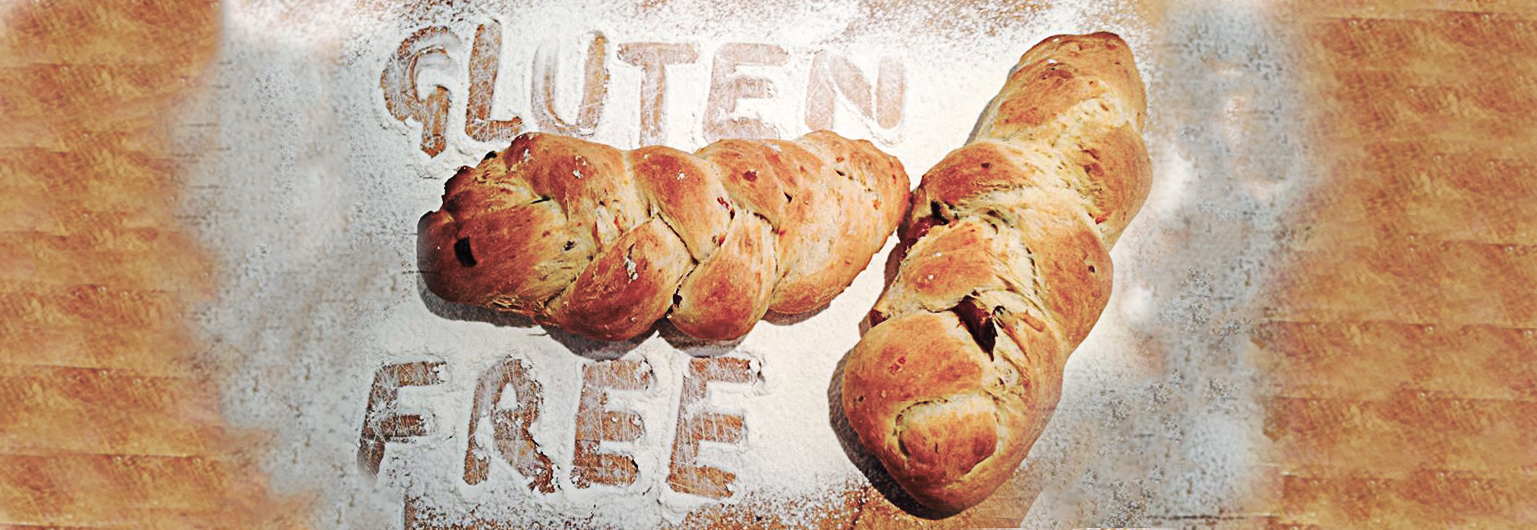
Baking Gluten-Free
By Charlotte Foster BSc (Hons), MSc, RD.
When speaking to people with coeliac disease or those following a gluten-free diet, the reoccurring dissatisfaction relates to manufactured gluten-free bread and the disappointment with nationwide adored past-time of baking!
Here at DINE, we are passionate about getting people back into the kitchen and re-engaged with food! Following a gluten-free diet for coeliac disease patients can be an adjustment, so here are some top tips for approaching baking gluten-free!
You may be wondering why gluten-free baking is a challenge in the first place? So first thing’s first!
It’s important to understand why recipes list certain ingredients in order for the bakes to be a success! It’s not uncommon to think that we can modify recipes by leaving out non gluten-free ingredients and then get frustrated when the bakes aren’t a success…. guilty as charged!!
To understand why the structure of these failed bakes aren’t working, we need to understand the role that the ingredients play…
A GREAT BRITISH BAKING EDUCATION….
What is the role of gluten in bread making and baking?
Gluten in its culinary context within wheat flours gives dough its elastic qualities and helps trap gas (produced by the addition of a raising agent e.g. yeast) within baked goods, to give rise to a desired airy crumb structure.
Without gluten, air pockets don’t form and the crumb structure is likely to become dense and dry. Therefore, replacing the gluten with ingredients that can replicate these qualities is essential.
Remember – ALWAYS READ THE LABELS!
Gluten can be found in many food products, even in ones you perhaps wouldn’t expect e.g. sauces and salad dressings!
So what gluten-free flours are there?
Gluten-free recipes will often refer to using “gluten-free flour blends”. These can be bought from supermarkets (often in the gluten-free aisle). However, they are not always as easy to get hold of compared with gluten-containing flours. Essentially, these pre-made blends contain a range of gluten-free flours mixed together mixed in with a binding agent (often xanthan gum). So why not have a go at making your own?
Gluten-free Flours


Top tips!
- Look at the recipes for the proportions of the different flours and don’t forget to add the binding agent e.g. xanthan gum!
- Different flours have different flavour profiles so pay attention to the quantities recommended in recipes!
- If you’re considering making your own gluten-free flours, refrigerating them will help keep them fresher for longer. Be sure to bring them to room temperature before baking with them.
Bringing it all together!
Eggs aren’t just a good source of protein! They are often a key feature in gluten-free baking, due to their ability to bind ingredients together and help create structure to foods.
However, there are 2 other ingredients that often feature in recipe lists – Guar gum and Xanthan gum (you can find these in the baking aisle of supermarkets). These are usually interchangeable and help to stabilise/ thicken gluten-free baked goods, so make sure you keep a pot of these in your cupboard!
Top tips when baking gluten-free…
- Make the most of foods that are naturally gluten-free… there are so many!!
- Try, test and invest in a recipe journal! Experiment with recipes, everyone will have a different taste! Journal the recipes that you like and that work well.
- Have realistic expectations! Gluten-free variations of well loved dishes and bakes will never be exactly the same… try and be open minded.
- Get the crunch! Steam baking will give your bread a lovely crust.
- Seal in the freshness! Gluten-free baked goods can go stale quickly, so make sure you wrap them in cling film/ store in an airtight container to prevent them drying out!
Tips to increase the nutrition of your gluten-free bakes
- Create your own nutritious gluten-free flour mixes by using a combination of gluten-free flours.
- Where possible, use whole grain or enriched, gluten-free flours (these will contain extra vitamins and minerals)
Tips to increase the moisture of your gluten-free bakes
- Adding flaxseeds/ linseeds to gluten-free flours will help absorb moisture to help for a tender crumb structure.
- Honey or agarve syrups can help retain moisture – be careful on how much you add as these are high in energy and sugar.
Tips to improve the structure of your gluten-free bakes
- Use a combination of gluten-free flours and mix together thoroughly before adding to other ingredients.
- Add dry milk solids or cottage cheese into recipe.
- Use evaporated milk in place of regular milk.
- To reduce grainy texture, mix rice flour or corn meal with liquid. Bring to a boil and cool before adding to recipe.
- Add extra egg or egg white if product is too crumbly.
- Do not over beat; kneading time is shorter since there is no gluten to develop.
- When using a bread machine, use only one kneading cycle.
Where is a good place to look for gluten free recipes and blogs?
There are 100s of gluten free recipe books available on the market as well as lots of great online blogs and sites. Instagram and Pinterest are overflowing with gluten free recipes and advice too.
Popular websites with recipes and blogs about the gluten free diet include:
Deliciously Ella (not all recipes are gluten free)
Ambitious Kitchen (not all recipes are gluten free)
Downshiftology (not all recipes are gluten free)
